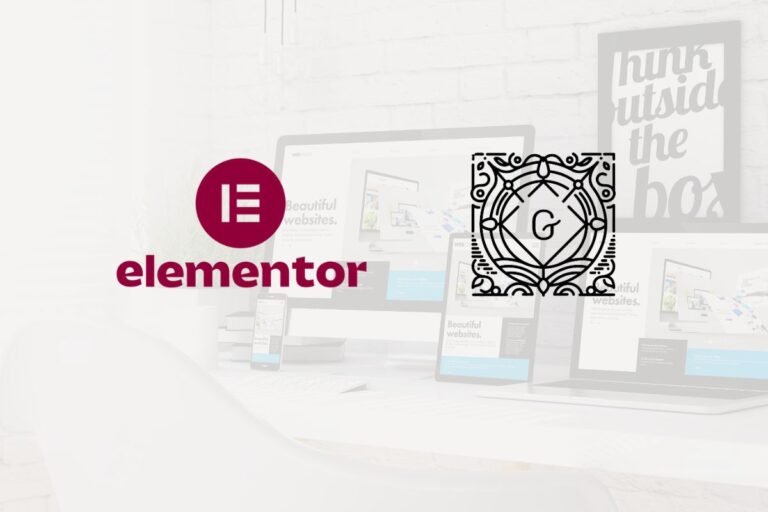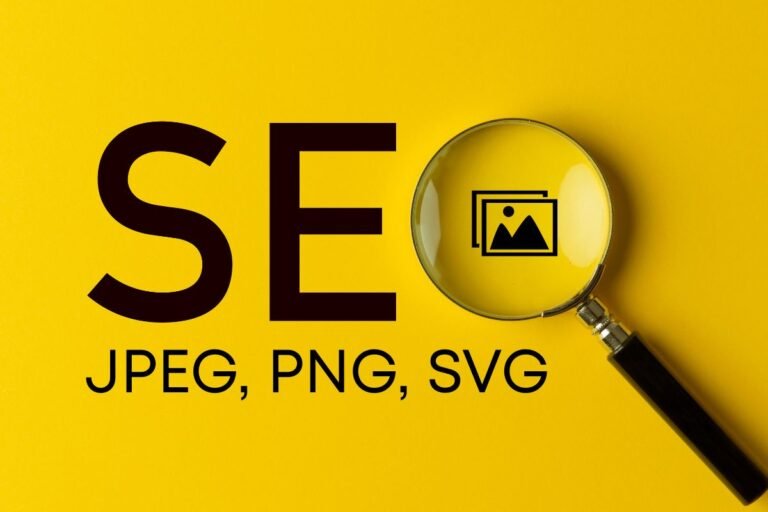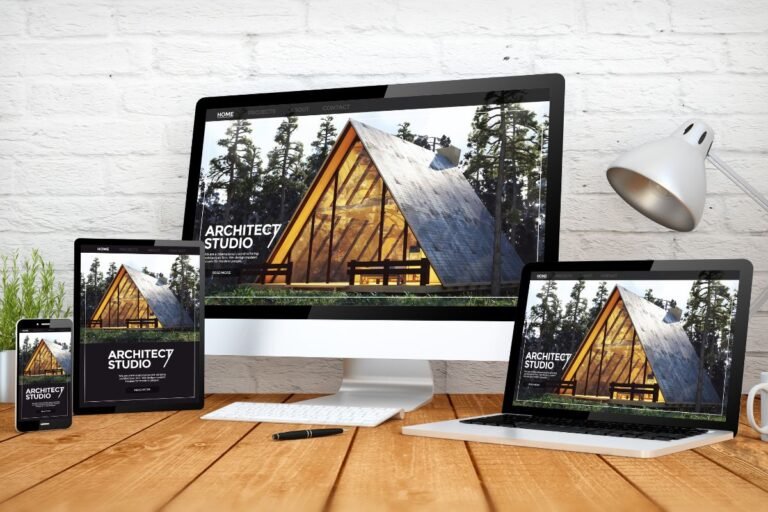If you’re planning a redesign or building a new site, 2025 is the year to treat WordPress like a performance platform, not just a CMS. The top WordPress website design trends for 2025 converge around speed, Full Site Editing (FSE) with block themes, AI-assisted workflows, and conversion-first UX, wrapped in accessibility, privacy, and sustainable choices. This guide cuts through hype and gives you practical steps, recommended tools, and real-world trade-offs so you can ship a site that’s faster, easier to maintain, and better for business.
Performance-First Design And Core Web Vitals
Google’s Core Web Vitals still influence SEO and, more importantly, how your site feels. In 2024/2025, Interaction to Next Paint (INP) replaced FID, so responsiveness is under the microscope. The mantra: design less, ship less, render faster.
Lean Media, Fonts, And Layouts That Ship Fast
- Start with a content-first layout. Remove non-essential carousels and background videos: they’re heavy and rarely convert.
- Use system fonts or a single variable font with a tight subset. Self-host fonts and preconnect to their origin: avoid multiple third-party font calls.
- Prefer CSS for effects (gradients, drop shadows, masks) over heavy images. Export hero images at the smallest acceptable dimensions.
- Replace icon packs with a single SVG sprite. Inline critical SVGs to avoid extra requests.
Recommended tools (value + ease of use):
- FlyingPress or WP Rocket for performance basics (minify, defer, delay JavaScript, preload key requests).
- Perfmatters for script manager and removing unused bloat (emoji, embeds, dashicons).
Pros:
- Faster LCP/INP, fewer regressions across devices.
Cons:
- You’ll make design trade-offs, fewer custom fonts, simplified layouts.
Server-Side Caching, CDN, And Edge Optimization Basics
- Pair solid hosting with server caching (Nginx FastCGI/Redis) and a global CDN. Edge networks reduce latency for visitors worldwide.
- Cloudflare (free-to-pro) + APO for WordPress is a strong value play. Bunny CDN is an affordable, fast alternative with global PoPs.
- Use full-page caching for anonymous traffic and granular cache rules for WooCommerce carts/checkout.
Hosting picks (performance per dollar):
- Kinsta, WP Engine, or Pressable for managed convenience and built-in caching/edge.
- SiteGround or Rocket.net for budget-conscious but fast stacks.
AVIF/WebP, Lazy Loading, And Font-Display Strategies
- Serve next-gen formats: AVIF where supported, WebP fallback. Use responsive srcset/sizes to match device width.
- Lazy-load below-the-fold images and iframes: eager-load only the LCP asset.
- Use font-display: swap for fast text rendering, or optional for system-font fallback without reflow.
Recommended plugins:
- ShortPixel, Imagify, or Optimole for on-the-fly WebP/AVIF, smart resizing, and CDN delivery.
When To Consider Headless Or Hybrid For Speed
- Headless (Next.js, Astro, Nuxt) can shine for complex front-ends or app-like UX with global edge rendering.
- Hybrid: Keep WordPress for editing: pre-render marketing pages statically: render dynamic bits via APIs.
- Costs: more dev time, more infra. For most small teams, a tuned block theme + caching/CDN is faster to ship and maintain.
Rule of thumb: choose headless if you need app-level interactivity or multi-channel front-ends. Otherwise, optimize the monolith.
Block Themes, Full Site Editing, And Design Systems
WordPress 6.6+ and 6.7 matured Full Site Editing. In 2025, block themes and the Site Editor are mainstream, letting you build consistent, maintainable systems without page-builder bloat.
theme.json, Style Variations, And Design Tokens
- theme.json centralizes your design tokens: colors, typography, spacing, borders, shadows, and layout rules.
- Define a type scale, spacing steps, and a limited color palette. You’ll get consistency across templates and blocks.
- Style Variations let you ship dark/light or alternative brand looks without a new theme.
Pro tips:
- Lock down block settings your team shouldn’t change. Guardrails prevent design drift.
- Use CSS variables exposed by theme.json for custom blocks/patterns.
Patterns, Synced Patterns, And Reusable Blocks
- Patterns are your layout building blocks, hero sections, feature grids, FAQs, and pricing tables.
- Synced patterns (formerly reusable blocks) let you update global sections (e.g., footers, CTAs) once.
- Save responsive variants (e.g., hero minimal for mobile) to speed up page creation.
Recommended resources:
- WordPress Pattern Directory for inspiration.
- Block theme starters like Frost, Blockbase, Ollie, or the Twenty Twenty-Five theme as a clean baseline.
Building A Maintainable Component Library In The Site Editor
- Create a Pattern Library page that documents usage: when to use, copy guidelines, do/don’t screenshots.
- Name patterns with a clear taxonomy: Section • Hero • Minimal: Section • Pricing • 3-Tier.
- Version your library. When you improve a pattern, note what changed and why.
Pros:
- Faster builds, fewer bugs, consistent brand.
Cons:
- Initial setup time and team training. Worth it once you’re past two or three templates.
AI-Assisted Design And Content Workflows
AI isn’t a magic wand, but in 2025 it’s a serious productivity partner. Use it to ideate, not to autopilot your brand.
AI For Wireframing, Layout Suggestions, And Imagery
- Use AI to turn briefs into wireframes. Tools like Figma AI, Framer AI, and EditorPlus AI (for blocks) can propose layouts based on content.
- Generate on-brand imagery with Midjourney, Adobe Firefly, or DALL·E, then compress and convert to AVIF/WebP.
- In WordPress, try Pattern generators inside some block suites to speed up hero sections and FAQs.
Pros:
- Rapid iteration, stakeholder alignment via quick mockups.
Cons:
- Generic outputs if you skip brand guidelines and accessibility checks.
Smart Content Drafting, Alt Text, And Summaries
- Use AI to draft first-pass copy, product summaries, and FAQ snippets. Then edit for voice and accuracy.
- Generate alt text from image context: verify accuracy, don’t insert decorative fluff.
- Auto-summarize long posts for TL:DR blocks and newsletter snippets.
Recommended tools:
- Jetpack AI Assistant (convenient inside WP), TypingMind or Notion AI for drafting, and Wordtune or Grammarly for polish.
Editorial Guardrails: Fact-Checking, Tone, And Consistency
- Build a content checklist: facts verified, sources linked, dates current (2025), tone on-brand, reading level target (e.g., Grade 8–10).
- Lock your voice with a style guide: headline case, word list (OK vs. okay), Oxford comma, CTA tone.
- Always test AI copy for bias and inclusivity. It’s your reputation on the line.
Accessibility And Inclusive UX By Default
Accessible sites convert better and lower legal risk. WCAG 2.2 (current) sharpened requirements around focus, target sizes, and navigation, plan for it from day one.
WCAG 2.2 Priorities: Focus, Targets, And Navigation
- Provide visible focus states with high contrast and clear outlines, no vague glows.
- Ensure target sizes of at least 24×24 px for tappable elements (2.5.8 Target Size).
- Avoid keyboard traps: all components must be reachable and operable by keyboard alone.
- Keep navigation consistent: add a “Skip to content” link.
Color Contrast, State Styles, And Keyboard-First Patterns
- Maintain 4.5:1 contrast for body text, 3:1 for large text/icons. Test hover, focus, active, and disabled states.
- For forms, never use color alone to signal errors. Add icons, messages, and ARIA attributes.
- Use semantic HTML in blocks (buttons as buttons, lists as lists): screen readers depend on it.
Testing With Automated Scans And Manual Reviews
- Automate: Lighthouse, axe DevTools, WAVE for quick checks.
- Manual: keyboard-only passes, screen reader sweeps (NVDA on Windows, VoiceOver on Mac/iOS), real-user testing if possible.
- Bake checks into sprints. Catching issues late is expensive.
Recommended plugins:
- Equalize Digital Accessibility Checker for WordPress audits.
- Enable Media Replace + alt-text checks for better media management.
Modern Visual Language: Variable Fonts, Dark Mode, And Motion
Your brand can look modern without sacrificing speed. In 2025, the winning combo is variable fonts, system-aware color modes, and purposeful motion.
Fluid Type Scales And Variable Font Performance Gains
- Use clamp() with fluid scales to adapt typography across viewports.
- One variable font often replaces four or more static weights, fewer requests, consistent rendering.
- Subset fonts to essentials (Latin, punctuation) to cut file size.
Good picks:
- Inter, Source Sans 3, Plus Jakarta Sans, and Recursive (all variable versions available).
System Color Preferences And Dark/Light Style Variations
- Respect prefers-color-scheme to auto-switch themes, with a manual toggle for user control.
- In block themes, ship light/dark Style Variations: ensure both meet contrast requirements.
- Test brand colors in both modes: tweak neutrals and surface colors to avoid muddy grays.
Micro-Interactions And Meaningful Motion Without Bloat
- Use CSS transitions and the Web Animations API, not heavy JS libraries.
- Progressive enhancement: content works without motion: extras layer on top.
- Honor prefers-reduced-motion to minimize animations for sensitive users.
Pros:
- Premium feel with minimal payload.
Cons:
- Requires careful QA across modes and motion settings.
Conversion-Focused UX For Lead Gen And Ecommerce
Pretty doesn’t pay the bills, conversions do. In 2025, WordPress gives you powerful, lightweight ways to test and improve outcomes.
Simplified Journeys, Form UX, And Trust Signals
- Map your primary journey: ad → landing page → form → thank-you → onboarding. Remove detours.
- Form best practices: minimal fields, inline validation, single-column layout, clear microcopy, and progress for multi-step forms.
- Add trust signals near CTAs: testimonials, logos, star ratings, “as seen in,” security badges, and transparent pricing.
Recommended tools:
- Fluent Forms (fast, great UI) or Gravity Forms (powerful add-ons). Pair with hCaptcha or Cloudflare Turnstile for low-friction spam protection.
- Thrive Ovation or Spectra/GenerateBlocks patterns for quick social proof layouts.
High-Converting Landing Pages With Patterns And A/B Tests
- Build with block patterns: hero + benefit bullets + proof + FAQ + final CTA.
- Keep headlines outcome-focused (“Get 3× More Demos With Fewer Ads”).
- Run A/B tests on headlines, hero images, and CTA placement.
A/B testing options:
- Nelio A/B Testing (native to WordPress).
- VWO or Convert for enterprise-grade experiments.
Checkout UX, Subscriptions, And Customer Portals
- For WooCommerce: enable guest checkout, auto-apply coupons, and show total cost upfront.
- Offer express pay (Apple Pay/Google Pay), one-tap wallets, and clear shipping/returns.
- For subscriptions: WooCommerce Subscriptions or Paddle/Stripe Billing: add a simple self-serve portal for upgrades and pauses.
Pros:
- Real revenue lift from iterative testing.
Cons:
- Requires disciplined measurement and traffic to reach significance.
Privacy, Security, And Sustainable Design
Trust is a design decision. Build privacy-forward, secure, and lower-carbon sites, customers notice, and regulators do too.
Consent UX, Analytics Choices, And Regulatory Updates
- Make consent banners honest and unobtrusive: equal “Accept” and “Decline” prominence.
- Consider cookieless or first-party analytics: Plausible and Matomo are strong WordPress-friendly options: GA4 is powerful but heavier and consent-sensitive.
- Track only what you use. If you don’t need cross-site tracking, don’t include it.
- Keep tabs on GDPR/UK GDPR, CPRA (California), and emerging state laws in the US. Document data flows.
Plugins to consider:
- Complianz or CookieYes for consent management and region-based rules.
Authentication UX, MFA, And Session Design
- Offer passwordless or passkey login where possible: it’s faster and more secure.
- Enforce MFA for admins/editors. Keep session lengths reasonable, with friction only where risk is high.
Recommended tools:
- WP 2FA or Solid Security (formerly iThemes) for MFA and brute-force protection.
- miniOrange or passkey plugins for WebAuthn/passwordless.
- Wordfence or Patchstack for vulnerability alerts and virtual patching.
Low-Carbon Design: Fewer Requests, Smaller Payloads
- Audit your waterfall: fewer scripts, fewer fonts, smaller images. It’s good for speed and the planet.
- Prefer static assets via CDN and cache aggressively.
- Avoid auto-playing media: compress video and host externally when needed.
Measure and improve:
- Website Carbon Calculator, Green Web Foundation tools, and WebPageTest to quantify impact.
Pros:
- Lower costs (bandwidth/compute), happier users.
Cons:
- Some marketing scripts may need to be cut or replaced.
How To Choose And Implement The Right Trends
You don’t need every trend, just the few that move your metrics. Use a lightweight decision framework, then ship in focused sprints.
Impact/Effort Scoring For Small Teams
Create a quick matrix:
- Impact: revenue, leads, retention, SEO (score 1–5).
- Effort: time, cost, risk, maintenance (score 1–5).
- Priority = Impact ÷ Effort. Tackle high scores first.
Example scores:
- Image optimization and caching: Impact 5 / Effort 2 → Priority 2.5 (do now).
- Pattern library and theme.json cleanup: Impact 4 / Effort 2 → 2.0 (high).
- Dark mode: Impact 2 / Effort 2 → 1.0 (nice-to-have).
- Headless rebuild: Impact 3 / Effort 5 → 0.6 (defer unless strategic).
A 90-Day Roadmap: Audit, Pilot, Rollout, Measure
- Days 1–14: Audit
- Measure CWV in PageSpeed Insights and real-user data (CrUX if available).
- Inventory plugins, scripts, fonts, and third-party embeds: flag redundancies.
- Accessibility scan + manual checks on top templates.
- Days 15–45: Pilot
- Carry out performance quick wins (image compression, script deferral, caching, CDN).
- Build or refine theme.json and top-10 block patterns.
- Create 2–3 AI-assisted content experiments (FAQ pages, alt text, summaries) with editorial guardrails.
- Days 46–75: Rollout
- Apply optimizations sitewide: ship dark/light Style Variations if planned.
- Launch 2 A/B tests on key landing pages.
- Improve checkout UX and express payments if you sell online.
- Days 76–90: Measure & Iterate
- Compare CWV, conversion rates, bounce/engagement, and revenue/lead volume.
- Document wins, retire low-value scripts, and plan next quarter.
Recommended tool stack (best balance of performance, ease, value):
- Hosting/CDN: Cloudflare APO or Bunny CDN, with Kinsta or SiteGround.
- Performance: FlyingPress or WP Rocket + Perfmatters.
- Images: ShortPixel or Imagify: Optimole if you want built-in CDN.
- Design: Twenty Twenty-Five or GeneratePress/Block-based child, plus Pattern Library.
- A/B Testing: Nelio (native) or VWO (advanced).
- Forms: Fluent Forms for speed: Gravity Forms for integrations.
- Security/Privacy: Solid Security or Wordfence + Complianz: Plausible/Matomo for analytics.
Budget tip: start with free tiers (Cloudflare, Plausible trial, ShortPixel credits), then upgrade only where ROI is clear.
Conclusion
Design trends come and go, but in 2025 the winners are durable: performance-first, block-based systems, accessible interfaces, privacy by design, and conversion-focused UX. If you choose just three moves, make them these: optimize media and caching, standardize your theme.json and pattern library, and run one A/B test per month on your highest-traffic page.
Ready to put this into action? Explore our recommended tools, best plugins for performance (FlyingPress, Perfmatters), top themes and block libraries (Twenty Twenty-Five, GenerateBlocks, Frost), privacy and analytics (Complianz, Plausible), and start your 90-day roadmap today. Your future customers (and your Core Web Vitals) will thank you.
Key Takeaways
- The top WordPress website design trends 2025 put performance first—optimize Core Web Vitals (INP), ship lean media/fonts, use AVIF/WebP, and pair caching with a global CDN.
- Adopt block themes and Full Site Editing: centralize tokens in theme.json, build a versioned pattern library, and use synced patterns for consistent, maintainable UI at scale.
- Use AI for rapid wireframes, on-brand imagery, and first-draft copy/alt text, but enforce editorial guardrails, accessibility checks, and brand voice before publishing.
- Bake in accessibility per WCAG 2.2 with visible focus states, adequate target sizes, semantic HTML, and routine audits via Lighthouse, axe, and real-user testing.
- Drive conversions with simplified journeys, fast forms, strong trust signals, and ongoing A/B tests on headlines, hero visuals, CTAs, and checkout UX with express payments.
- Prioritize privacy, security, and sustainability: honest consent UX, first-party analytics (Plausible/Matomo), MFA/passkeys, and fewer scripts for a lower-carbon, faster site.
Frequently Asked Questions
What are the top WordPress website design trends 2025 to focus on?
Prioritize performance-first design, block themes with Full Site Editing, AI-assisted workflows, accessibility (WCAG 2.2), privacy-by-design, and conversion-focused UX. Use lean media, variable/system fonts, SVGs, CDN + edge caching, and pattern-based design systems. These trends make sites faster, easier to maintain, and more effective for business outcomes.
How do I improve Core Web Vitals on WordPress in 2025?
Optimize for INP and LCP: strip heavy carousels/background videos, serve AVIF/WebP with responsive srcset, lazy-load non-critical media, eager-load only the LCP image, and use system or a single variable font with font-display. Pair quality hosting with caching/CDN. Tools: FlyingPress or WP Rocket plus Perfmatters.
When should I choose headless WordPress vs. a tuned block theme?
Go headless (Next.js/Astro) if you need app-level interactivity, multi-channel frontends, or fine-grained edge rendering. Expect higher dev/infra costs. Most teams will ship faster with a well-optimized block theme, server caching, and a CDN. Rule of thumb: choose the simplest setup that meets UX goals.
How do I use theme.json and patterns to build a scalable design system?
Centralize tokens in theme.json (type scale, spacing, colors, borders, shadows). Create Style Variations for light/dark modes. Build a pattern library for heroes, pricing, FAQs, and CTAs; use synced patterns for global sections. Lock risky block settings, document usage, and version updates to maintain consistency across pages.
What’s the difference between block themes and classic themes, and should I switch in 2025?
Block themes use Full Site Editing, theme.json design tokens, and patterns for visual, code-light customization. Classic themes rely on PHP templates and customizer options, often with page builders. Switching to a block theme reduces bloat, improves consistency, and aligns with modern workflows—ideal for most new builds and redesigns in 2025.
Can AI-generated copy and images hurt SEO or accessibility on WordPress in 2025?
AI is fine when used with editorial guardrails: fact-check, align tone, and ensure originality. Provide descriptive, accurate alt text; avoid decorative filler. Optimize images (compression, AVIF/WebP) and test accessibility. For SEO, prioritize helpful, expert-reviewed content that meets search intent. AI drafts; humans refine—especially for E-E-A-T topics.


